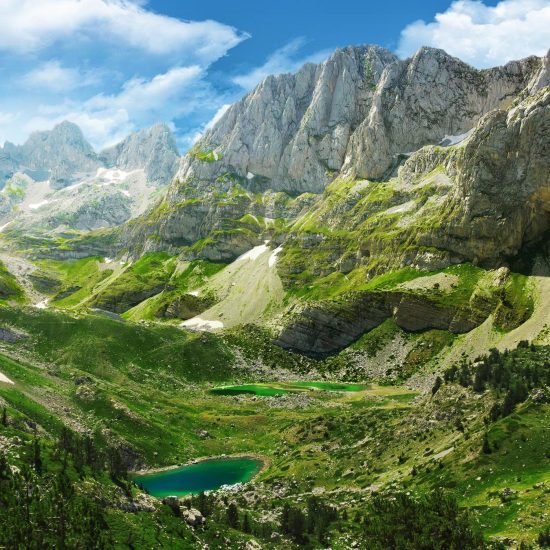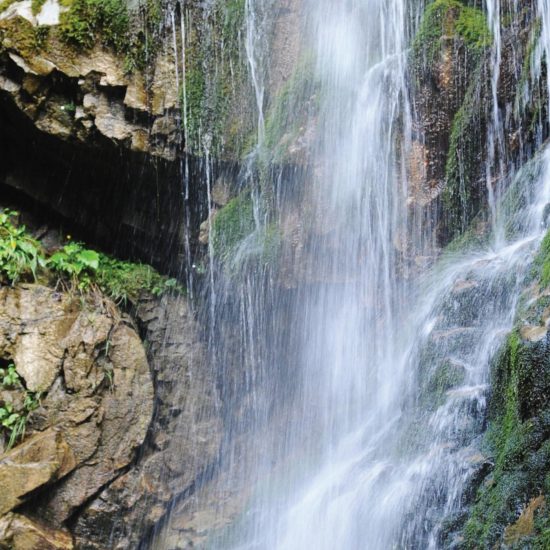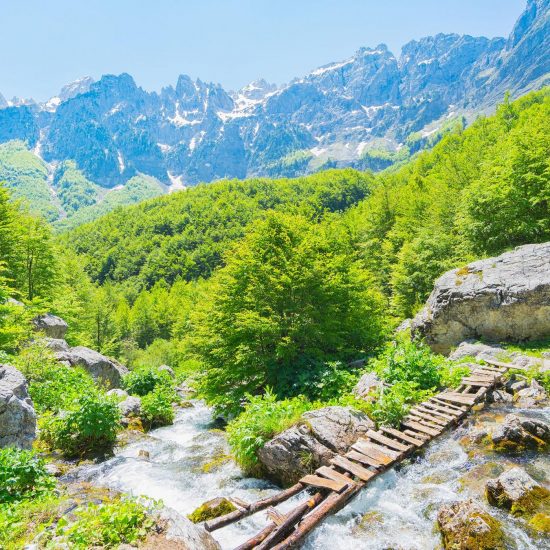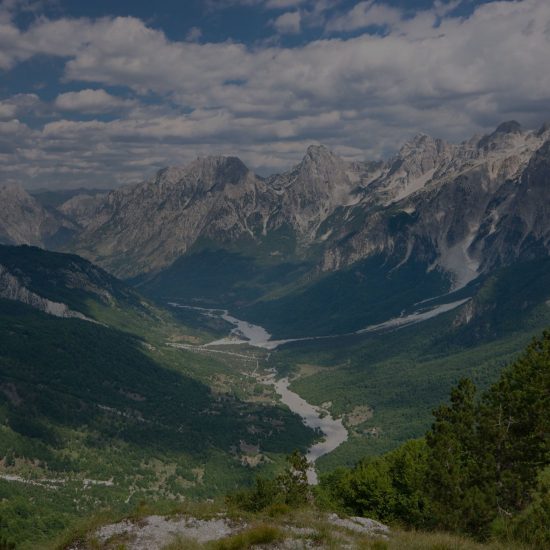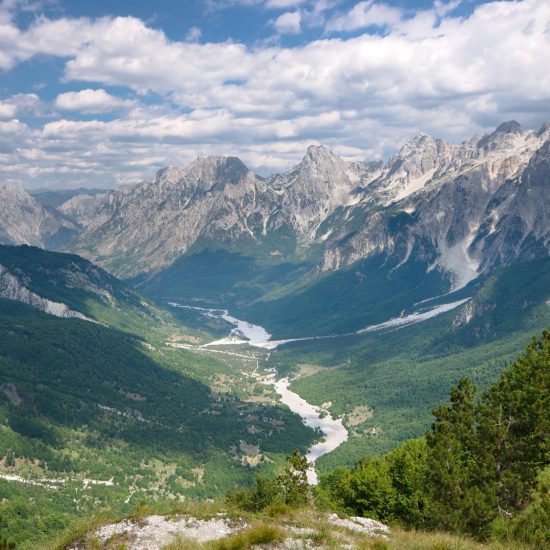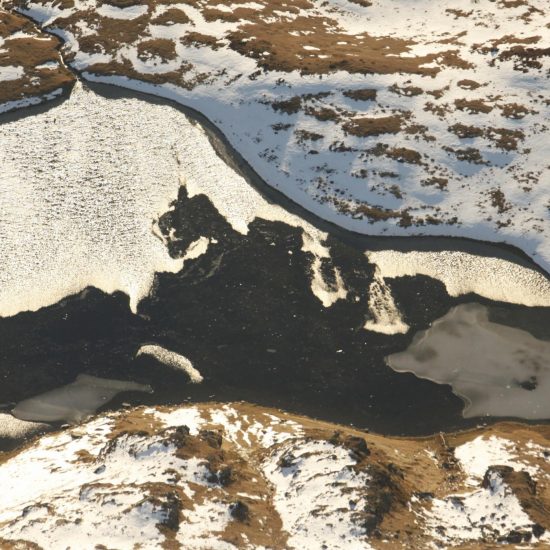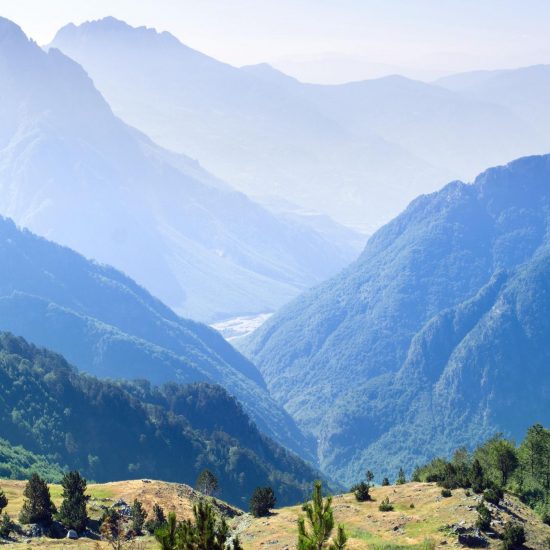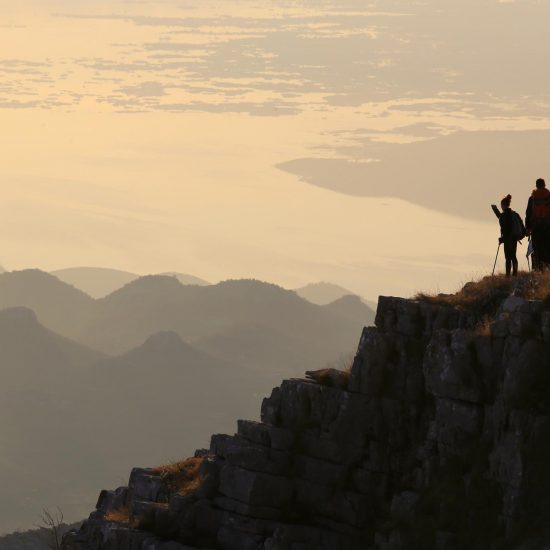Vermoshi
Another interesting place in the Western Alps is Vermosh, located in the northern mountains of Albania, 95 km from Shkodra in the Kelmend region (from the Roman word “Clemens”, which means gentle, simple and kind). The first thing that catches your eye while traveling is Kafa-e-Rrapshit, where you can see the crystal clear waters of the Chemi River, creating a wonderful contrast with the surrounding landscape. During the summer, the ponds on the river are perfect for sunbathing and many visitors stop to soak up the sun and enjoy. Vermosh stands in an alpine field at an altitude of 1100 m above sea level, surrounded by high slopes. You can have fun hiking, climbing, skiing or mountain trout fishing. The locals take pride in the fact that their cuisine only delights visitors when accompanied by their own dairy products, so don’t forget to treat yourself.
Aunts
Located 70 km from Shkodra, you must pass Qafa e Tërthores at 2000 m before descending to Gropa e Thethit, crossing the stream of the same name. It’s a trip you’ll want to prepare your camera for, full of extended mountain views, cascading over rocky slopes of water and trees reaching for sunlight on rocky slopes. This area is rich in sights such as the 30 m high Grunas waterfall, the amazing cold springs of Okol, the caves of Birrat-me-Rate (Round Holes) and Mount Arapi. In the park, people often enjoy hiking, climbing, skiing (especially on the east slope), fishing, even mountain biking and spelang. Almost 90% of the park area is covered with beech trees, providing shade for many different types of flowers such as Wulfenia baldacci, discovered by the Italian botanist Baldacci. Interestingly, this flower is found only in Teti. The animal world is as rich as the flora, distinguished by the famous golden eagle and rykebul (lynx). In the waters of the Tet stream, marbled trout make their home. While in Teta, you can stay at local guest houses designed to showcase traditional Alpine architecture. A typical dish of the area is ferlik or you can try one of the large varieties of local trout. If time permits, many travelers will enjoy a short excursion to the Shala Valley, which will bring them closer to the heart of the Albanian Alps. While in Teta, you can stay at local guest houses designed to showcase traditional Alpine architecture. A typical dish of the area is ferlik or you can try one of the large varieties of local trout. If time permits, many travelers will enjoy a short excursion to the Shala Valley, which will bring them closer to the heart of the Albanian Alps. While in Teta, you can stay at local guest houses designed to showcase traditional Alpine architecture. A typical dish of the area is ferlik or you can try one of the large varieties of local trout. If time permits, many travelers will enjoy a short excursion to the Shala Valley, which will bring them closer to the heart of the Albanian Alps. created to showcase traditional Alpine architecture. A typical dish of the area is ferlik or you can try one of the large varieties of local trout. If time permits, many travelers will enjoy a short excursion to the Shala valley, which will bring them closer to the heart of the Albanian Alps. created to showcase traditional Alpine architecture. A typical dish of the area is ferlik or you can try one of the large varieties of local trout. If time permits, many travelers will enjoy a short excursion to the Shala Valley, which will bring them closer to the heart of the Albanian Alps.
Valbone
The Valbona river valley is located in the eastern part of the Albanian Alps. The national park with an area of 8000 hectares is one of the most beautiful natural areas in Albania. The park is located about 22 km from the Alpine town of Bairam Kurri. Before entering the valley, you will find the spring (urellen) Shoshan located just 3 km from Bayram Kurri. This spring rushes through limestone fissures on its way to the Valbona River, creating an attractive canyon 2-3m wide and 50m deep. Upon entering the valley, you will pass several picturesque villages. The first, with Alpine-style houses, is called Dragobia, and it is there that the valley narrows. Past Dragobia, at the foot of the mountain where the Cerremi stream flows into the Valbona River, is the famous cave where the national hero Bairam Kurri was besieged and killed. It was after this event that the city got its name. Valbona is located 25 km from the town of Bairam Kurri and is the most important population center of the valley. It is full of traditional houses, creating a picturesque view in symmetry with the natural wonders of the valley, which again widens in this place. Valbonne has a comfortable traditional hotel, or you have the option of staying in a country house, as the generosity and hospitality of the inhabitants is well known. The area is also known for its distinctive regional cuisine, with specialties such as mazzha, flia (a multi-ball shaped pancake-like dish cooked on an open charcoal and steamed, often served with local honey) and pitja. Through Selimai, the road continues through a valley with fascinating views with rich colors of both spring life and snow covering the nearby rocky peaks. The last village before as you arrive at the drain of the river Valbona, there is Rrogam. Rrogam is a remote village surrounded by untouched natural landscapes. The whole valley shines with rare colors and beauty. On one side, you see the crystal clear waters of Valbona, and on the other, a sharp yet green mountain face. Until May, you can enjoy the contrast of pure white snow on the treetops against the blue sky. The flora of the national park includes a variety of plants and trees, the most common of which is silver spruce. The rest are beech forests, walnuts, chestnuts and wild apple trees. There are also numerous berries, in particular wild blueberries and strawberries. Animals in the park include bears, wolves, wild cats, and even herds of wild goats climbing the rock. In the river you can meet marble trout, rare fish, found in the crystal clear waters of Valbona, with a unique taste. The valley, the park and the whole area are known for heavy snowfall, which begins in early November and lasts almost until May. There are many outdoor activities in the national park such as skiing, climbing, fishing, hiking and trekking in the valley and along different streams (Cherrem, Kukai) and canoeing along certain parts of the river. Valbona can also serve as a starting point if you want to climb Mount Jezerca, the second highest peak in Albania. In the river you can find the marble trout, a rare fish found in the crystal clear waters of Valbona, with a unique taste. The valley, the park and the whole area are known for heavy snowfall, which begins in early November and lasts almost until May. There are many outdoor activities in the national park such as skiing, climbing, fishing, hiking and trekking in the valley and along different streams (Cherrem, Kukai) and canoeing along certain parts of the river. Valbona can also serve as a starting point if you want to climb Mount Jezerca, the second highest peak in Albania. In the river you can find the marble trout, a rare fish found in the crystal clear waters of Valbona, with a unique taste. The valley, the park and the whole area are known for heavy snowfall, which begins in early November and lasts almost until May. There are many outdoor activities in the national park such as skiing, climbing, fishing, hiking and trekking in the valley and along different streams (Cherrem, Kukai) and canoeing along certain parts of the river. Valbona can also serve as a starting point if you want to climb Mount Jezerca, the second highest peak in Albania. There are many outdoor activities in the national park such as skiing, climbing, fishing, hiking and trekking in the valley and along different streams (Cherrem, Kukai) and canoeing along certain parts of the river. Valbona can also serve as a starting point if you want to climb Mount Jezerca, the second highest peak in Albania. There are many outdoor activities in the national park such as skiing, climbing, fishing, hiking and trekking in the valley and along different streams (Cherrem, Kukai) and canoeing along certain parts of the river. Valbona can also serve as a starting point if you want to climb Mount Jezerca, the second highest peak in Albania. hiking and trekking in the valley and along different streams (Cherrem, Kukai) as well as canoeing along certain parts of the river. Valbona can also serve as a starting point if you want to climb Mount Jezerca, the second highest peak in Albania. There are many outdoor activities in the national park such as skiing, climbing, fishing, hiking and trekking in the valley and along different streams (Cherrem, Kukai) and canoeing along certain parts of the river. Valbona can also serve as a starting point if you want to climb Mount Jezerca, the second highest peak in Albania. hiking and trekking in the valley and along different streams (Cherrem, Kukai) as well as canoeing along certain parts of the river. Valbona can also serve as a starting point if you want to climb Mount Jezerca, the second highest peak in Albania. There are many outdoor activities in the national park such as skiing, climbing, fishing, hiking and trekking in the valley and along different streams (Cherrem, Kukai) and canoeing along certain parts of the river. Valbona can also serve as a starting point if you want to climb Mount Jezerca, the second highest peak in Albania. There are many outdoor activities in the national park such as skiing, climbing, fishing, hiking and trekking in the valley and along different streams (Cherrem, Kukai) and canoeing along certain parts of the river. Valbona can also serve as a starting point if you want to climb Mount Jezerca, the second highest peak in Albania. There are many outdoor activities in the national park such as skiing, climbing, fishing, hiking and trekking in the valley and along different streams (Cherrem, Kukai) as well as canoeing along certain parts of the river. Valbona can also serve as a starting point if you want to climb Mount Jezerca, the second highest peak in Albania.

